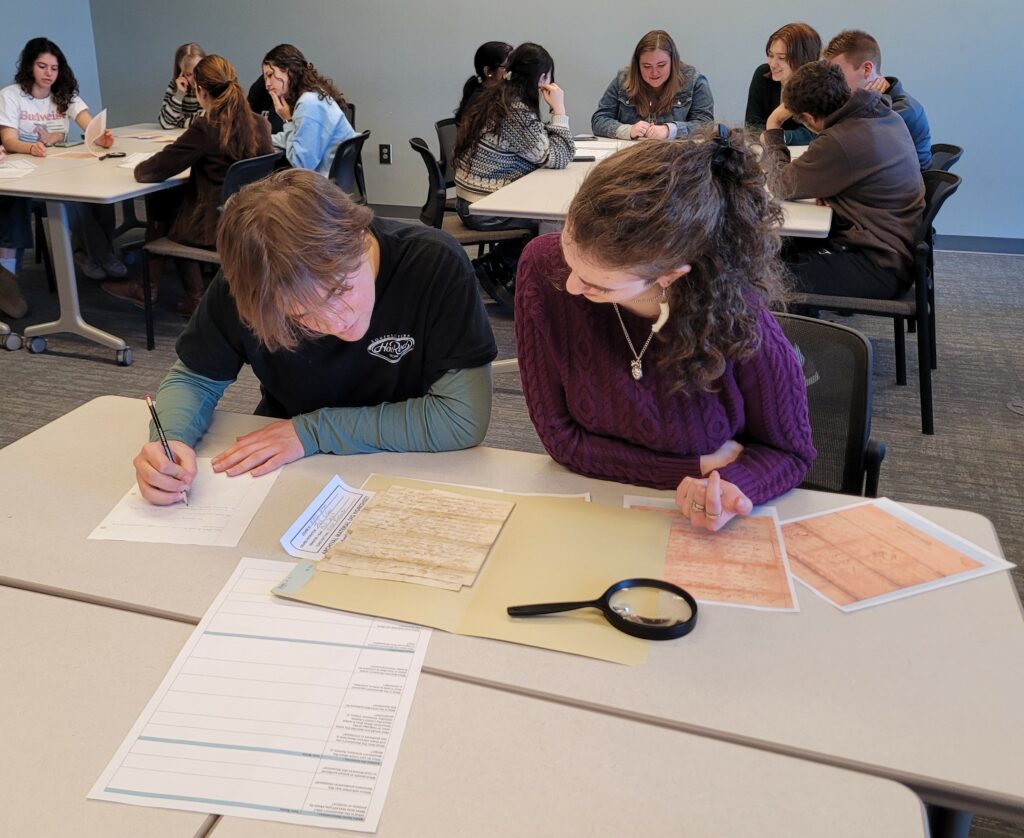In collaboration with UGA’s Special Collections Libraries, my students examined a series of nineteenth-century archival documents, including sermons, letters, diaries, political cartoons, news articles, and broadsides. Students transcribed handwritten documents, identified their significance, and connected them to texts we read in class.
Pragna Rao and Bridget Blanchard looking at a 1st edition of Moby-Dick (1851)
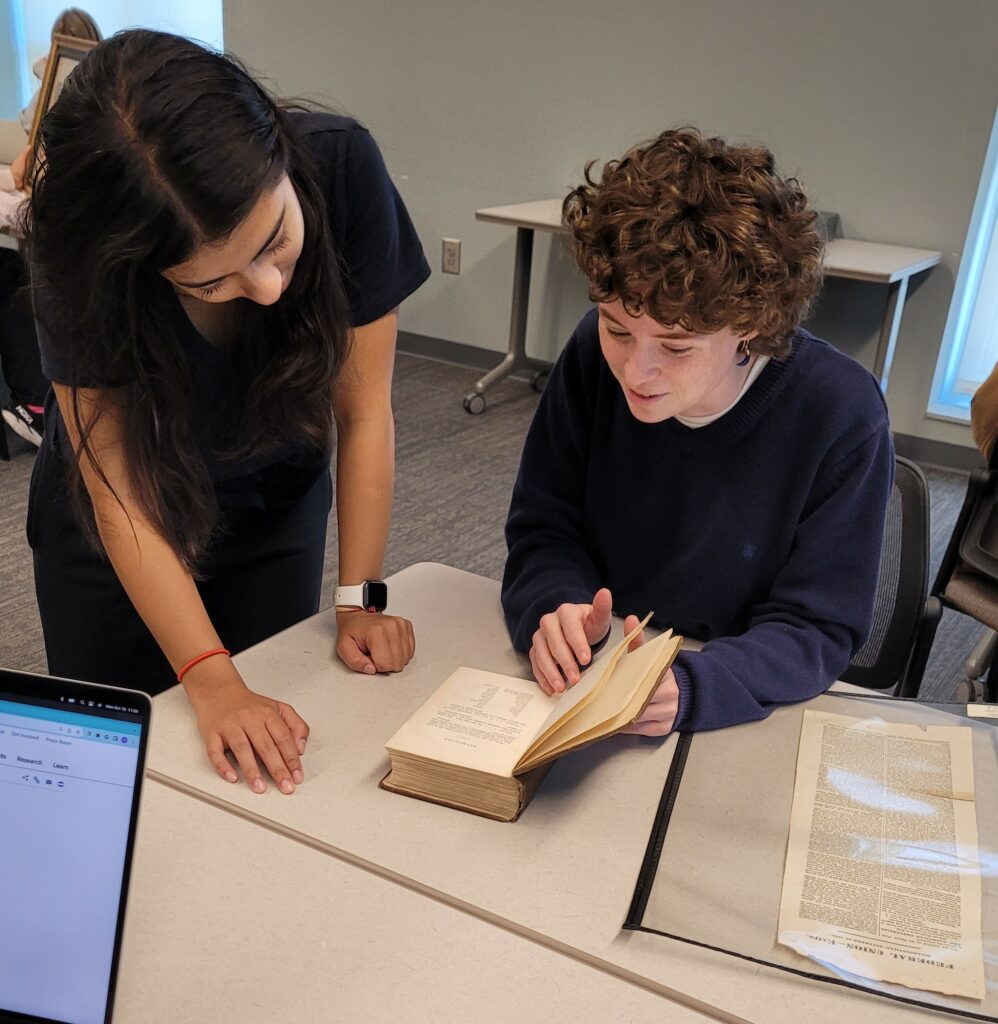
Kate Lee, Anika Balamurugan, Riley Stewart, Madelyn O’Boyle, Jackson Yoder, and Fares Barghouthi filling out their prompt sheets
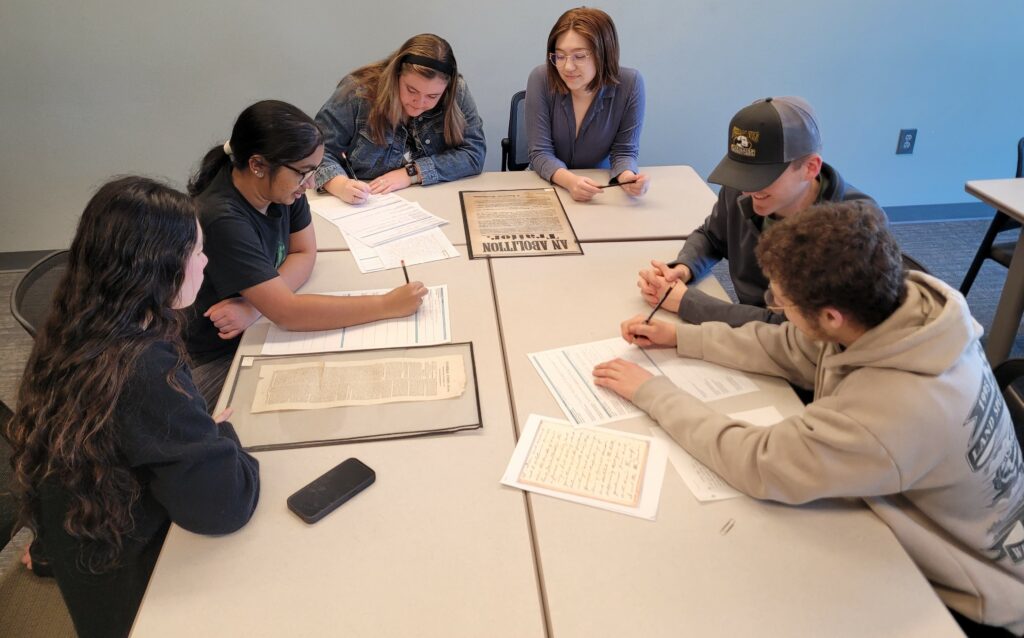
This broadside prints the Declaration of the Anti-Slavery Convention that met in Philadelphia in 1833. The image at the top depicts Samson wrestling with a lion.
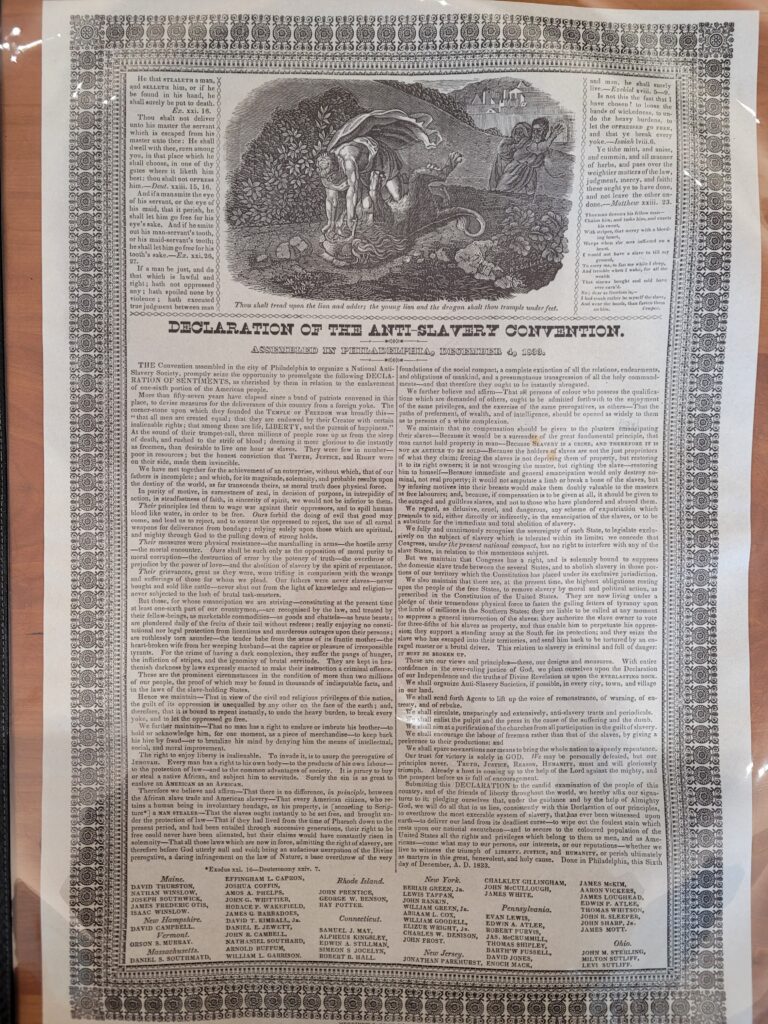
This political cartoon by Albert J. Volck depicts Abraham Lincoln as Don Quixote and Benjamin Butler as Sancho Panza.
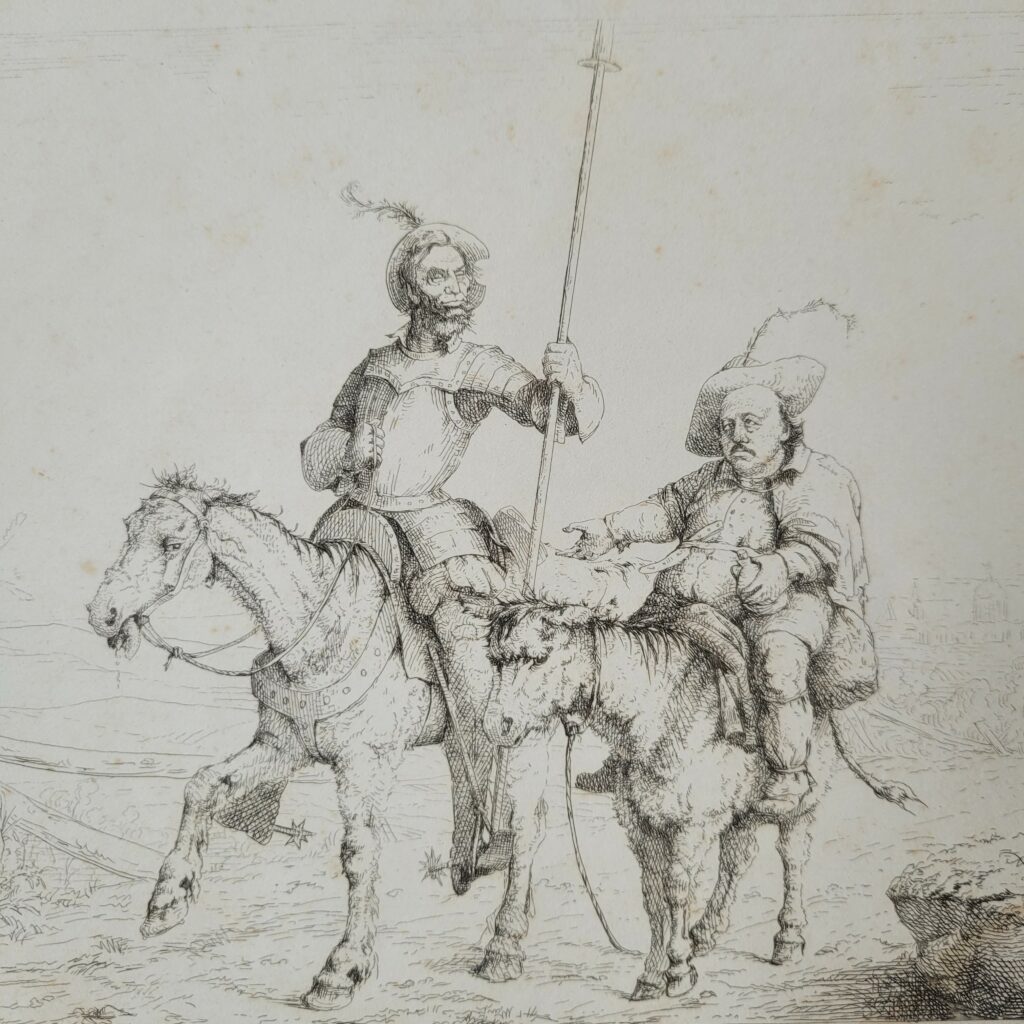
This engraving of R.R. McIan’s painting depicts Charles Wesley as the “Poet of Methodism” preaching to Native Americans
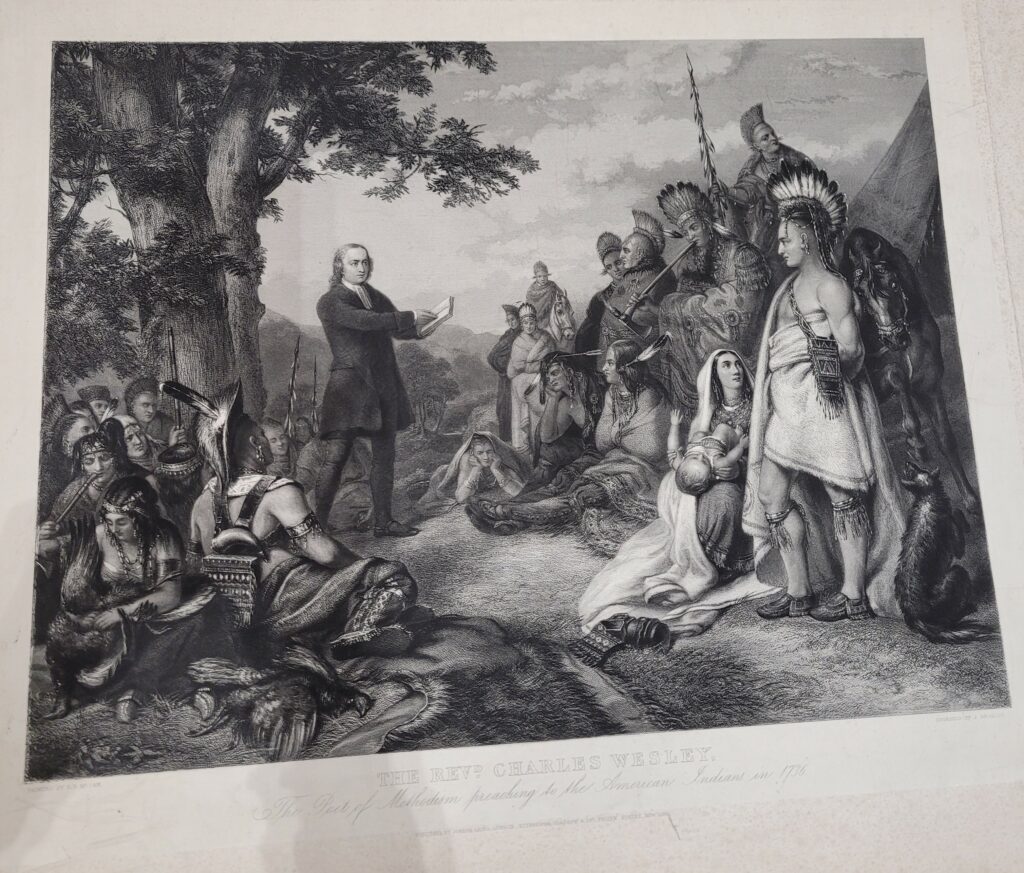
Samantha Ludewig, Alice Adams, Emily Kirk, Rachel Winner, Elena Pope, and Gabriella Malerba analyzing McIan’s depiction of Wesley

Gustavus A. Bull attended UGA in the 1850s. His 1853 Junior Exhibition Speech critiqued Harriet Beecher Stowe’s landmark abolitionist novel Uncle Tom’s Cabin (1852).
Bull-letter-pt1Jennie Akehurst’s diary includes reflections on Lincoln’s election, such as the reference to “rabid abolitionists” in the excerpt below.
AkehurstWilliam Torrance’s letter to George Crawford discusses Elijah Burritt’s arrest for possessing “insurrectionary pamphlets,” including David Walker’s Appeal to the Colored Citizens of the World (1829).
Torrance-to-CrawfordAiden Tranovich and Caryline Porter deciphering Torrance’s letter to Crawford
